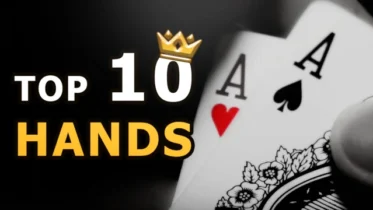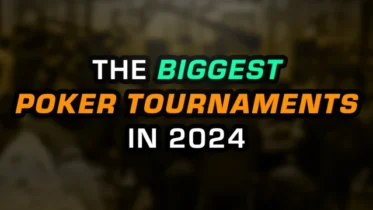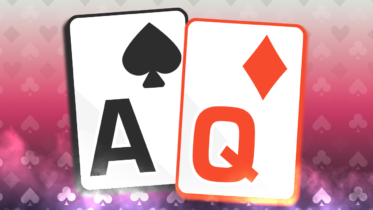In the first half of this two-part series, I talked about the joys and dangers of Double Board PLO Bomb Pots (“DBPLOBP”). One of the reasons I broke this into two parts was so that you’d be alert, with fresh coffee in front of you, when you got to this section. So let’s jump right in before the coffee cools…
PLO Tip #2: Do not chase half the pot
This might be the single most important message in this article, because it’s the least understood. Interestingly, before NLHE took over poker as we knew it, split pot games were quite common, and still are in some locales. Fixed limit Omaha-8-or-better (“O8”) is still popular in many places. Stud-8-or-better (Stud-8) is a fantastic poker game. And “Big O” (5-card Pot Limit Omaha 8-or-better) is getting a lot of attention – it’s a dynamite poker game.
People who have played a lot of split-pot poker have learned and internalized this rule. But since the Moneymaker/WPT boom of 2003, split-pot games have shrunk to a tiny fraction of the poker that is played. Many players have played thousands of hands of NLHE, but not a single hand involving a split pot.
DBPLOBPs are just another split-pot game.
You should only continue in a DBPLOBP if one of two things is true:
- You have robust equity on both boards, and/or
- You have a hammer-lock on one board, ensuring yourself at least half the pot.
Here’s a sad object lesson I saw last week. I was sitting next to a young woman at an Andrew Neeme / Brad Owen $2/5 meet-up game. She had run her $500 buy-in up to almost $2k, in large part thanks to scooping a monster DBPLOBP. A couple of hours later, another such pot broke out. The flops looked like this:
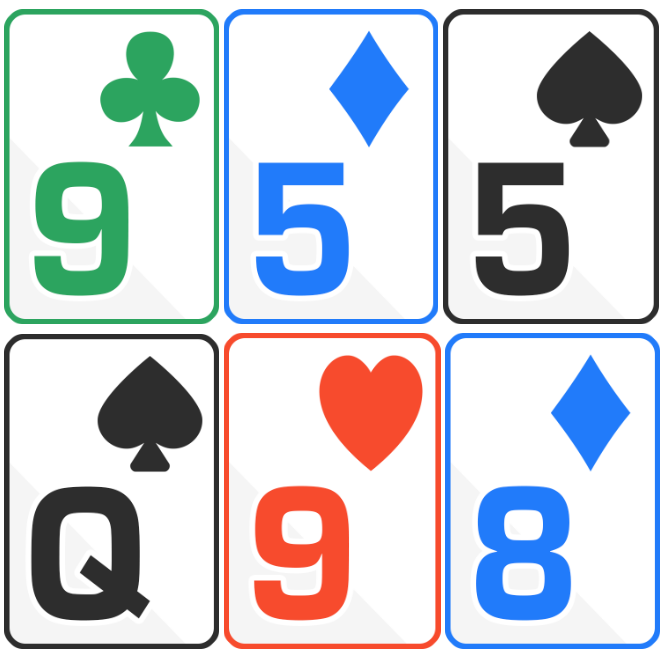
There was a $100 bet, which she and another player called. Now the big blind, a pro, check/raised to $500. The first player called, and it was on my friend on my left. She agonized, and eventually said, “I have the nuts. I can’t fold.” Setting aside the point that she shouldn’t say anything, this is an awful play. The nuts on the top board was quad fives, so I doubted she would agonize over that. No, I was pretty sure that she had jack-ten for the queen-high straight.
Sure enough, her entire $1500 went into the pot, and they ended up having an insane four-way all-in. As I feared, she had jack-ten with absolutely no other equity on that board, and zero interaction with the top board. As it turned out, the big blind had the dreaded 99xx hand, having flopped 9’s full on one board, and middle set on the other. The turn paired the queen on the bottom board, and the pro scooped a $6k pot.
My neighbor had not understood how vulnerable her straight was, or the importance of having equity on the other board. It cost her all of her profit, plus her original buy-in.
If you find yourself heads-up in a DBPLOBP, you can use card removal to evaluate how “protected” your equity is. That is, looking at both boards, it may be hard to imagine a hand that can scoop you (win both halves). But if you are multi-way, having a “good” hand on both boards often means you will see a “great” hand on both of the boards, perhaps in two different seats. Ignoring side pots, it doesn’t matter who you lose to if you get stacked.
When I say you need a “hammer-lock” on one board, that doesn’t mean the nut flush, or even a low full house. In the meet-up game example above, the pro could be quite comfortable with his nines full on the top board. If he ran into quad fives, or somebody turned a higher full house, well, that’s DBPLOBPs for you. But he was in a perfect position to scoop a monster, which he ultimately did.
What are the kinds of hands that deserve wading into all this chaos? Suppose you have T❤️T♣️J♦️A♦️. And the flops come out:
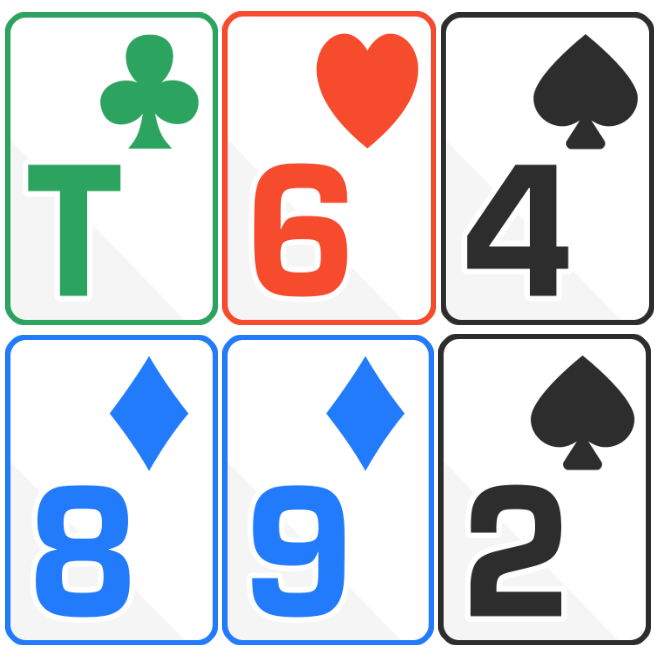
On the top board, you have the current nuts. On the bottom board, you have an open-end straight draw and the nut flush draw. Also of importance: none of the dead cards tie up cards you’d like to see come out. For instance, there are no dead diamonds, sevens, or queens, either in your hand or on the top board. This gives you a better chance to hit a flush or straight on the bottom. Similarly, there are no dead tens, sixes, or fours, leaving them all available to pair the top board and essentially tie it up for you.
While you have no guarantee for either board, your equity is robust enough to put stacks in on the flop should it come to it. And in fact, you should hustle to get those stacks in. You will realize your equity better on both boards versus fewer players. If you can get heads-up against one player, you are unlikely to get scooped, and will often scoop the pot.
A “hammer-lock” situation would be where you have QQxx, and one of the boards is Q-7-7. Now only quad sevens or an unlikely higher full house materializing could beat you for that board. Regardless of your equity on the other board, you should be willing to pile money in.
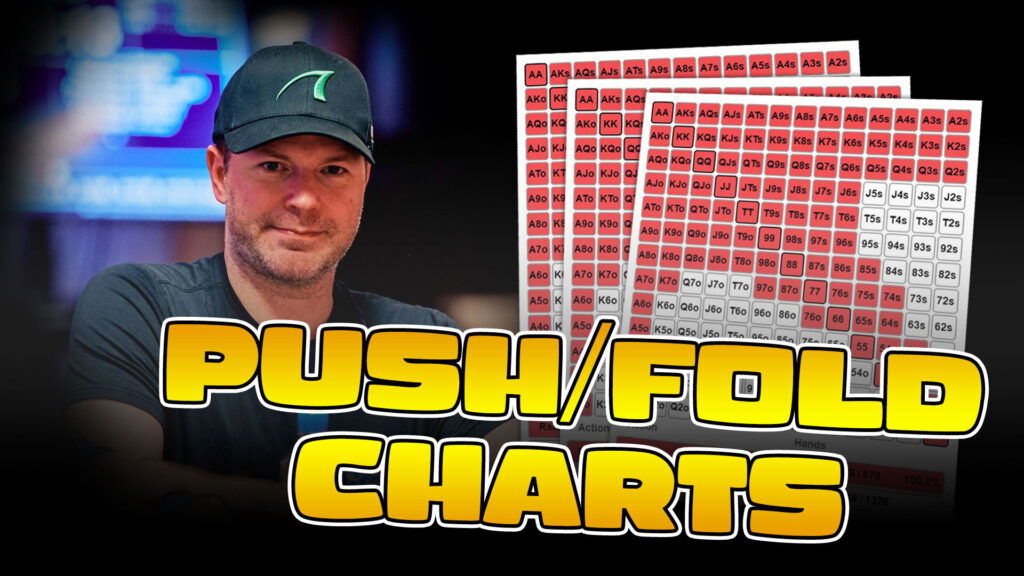
Make the best preflop decisions with Jonathan Little’s Push/Fold Charts!
PLO Tip #3: Know when to “push” and when to “pull”
While the idea of “push” versus “pull” is not unique to split-pot games, it comes up most often there. Essentially, do you want to keep players in the pot, or attempt to push them out?
For example, suppose you have 8877 in your hand, and somehow get a pathological pair of flops: 8-8-Q and 7-7-A. You would love to have as many players as possible put in as many bets as possible, right through the river – it’s almost certain you’ll be scooping the pot.
However, suppose you have the same hand, but the flops are 7-7-A and K-K-Q. Now you are “sure” that you’ll win the first board, but have “no” chance of winning the other one. You have a delicate balance to consider. If you think that there’s a way to win the entire pot with big bets and raises, then it may be to your advantage to do so – attempt to push the other players out of the pot. Conversely, if you think that at least one opponent is going to the bitter end (e.g. you suspect they have a KQ combination), then it’s to your advantage to pull other players into the pot. You’re going to split the pot with the KQ, so the more money that goes in from third parties, the more you collect. If the pot ends up heads-up, then you won’t profit from any further betting.
Note, by the way, that if two other players each have KQ combinations, that’s a great outcome for you. They are likely to pile the money in, and half of it will go to you, as they get “quartered.”
Unless your hand is invulnerable on one board, you don’t want to be raising, because you want to keep more people in the pot. The unlucky third player will provide profit for you and the other winner.
There’s no hard and fast rule for when to push and when to pull. But you need to be aware of the concept, and be cognizant of whether you want to try to win an entire (potentially smaller) pot, or split a much larger one.
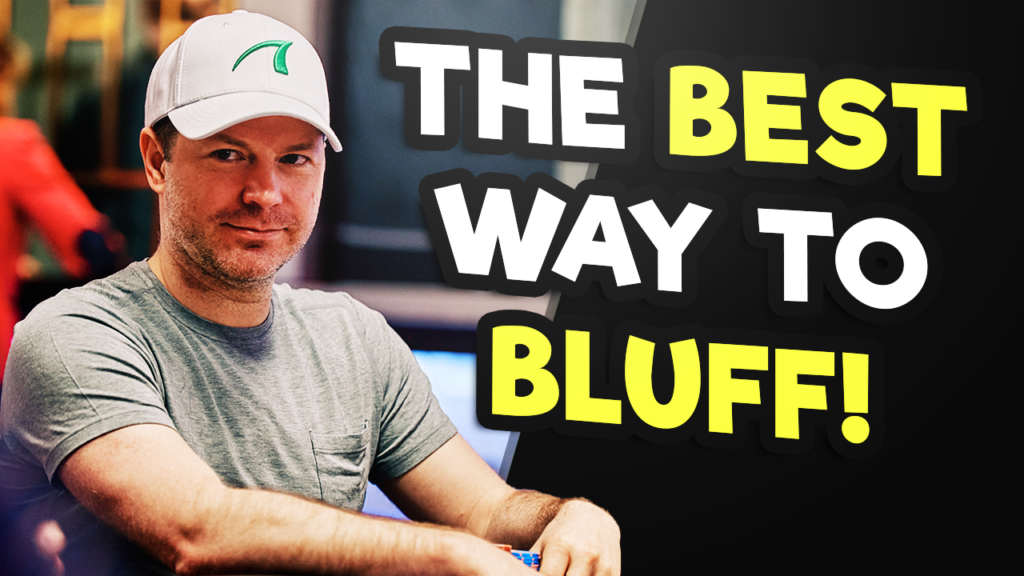
Let Jonathan Little teach you how to bluff like the pros!
Patience is a virtue
When you saw my example of a hand where you’re willing to pile the money in (top set and massive combo draw), you may have said, “C’mon Lee – this is an absurdly lucky flop.” Yes, exactly!
Only rarely can you profitably continue after the flop on a Double Board PLO Bomb Pot
From a pure probability standpoint, the dealer will “pick you” about 11% of the time if you’re playing 9-handed. If you’re playing one DBPLOBP every half hour, you could go a couple of weeks without getting picked. And that doesn’t even include the fact that other players may go to war with sub-par holdings, causing you to fold the best hand and/or the best draw.
If you insist on plowing forward based on half the pot, or hold’em value sensibilities (“A set is a really good hand!”) then your bankroll may be gone before the dealer picks you. Remember these three facts of DBPLOBPs:
- Understand that an army of cards is massed against you. The nuts is likely out there somewhere, unless you’re looking at it.
- Do not chase half the pot. If you have half of the pot on absolute lockdown, great.
- There are times when you want everybody in. There are times when you want everybody out. A heads-up DBPLOBP will probably not be very profitable for you.
The very good news is that almost nobody knows how to play DBPLOBPs correctly. In fact, I’m no expert on them. But there are some fundamental “Poker 101” concepts at play here that may be new to you if you’ve never played PLO. Or split pot games. Or bomb pots. Also, I enlisted the help of a legitimate PLO and split-pot expert, Doctor K, to review this material – I’m not making up stuff here.
With this tutorial, you will be many steps ahead of most people, who are just splashing around in DBPLOBPs. Follow the rules and be patient, because when the dealer does pick you, it can be for a pot that gives you your biggest win for a month.
Oh, and try the espresso-dark-chocolate-chip gelato next time.
Hosting notes for Double Board PLO Bomb Pots
As a public service for poker rooms that are allowing double board PLO bomb pots, I offer the following three suggestions:
- Cap the maximum investment for any one player. With the bomb antes already inflating the pot, and the giga-pot nature of PLO, a single uncapped DBPLOBP can be an existential threat to a perfectly fine poker game. The $6k DBPLOBP I described above literally broke our game. The Lodge in Austin caps $1/3 bomb pots at $500 per person, and $2/5 bomb pots at $1,000 per person. This seems reasonable.
- Maintain a separate “Bomb pot” button if bomb pots are done regularly, particularly on dealer changes. This ensures that everybody is treated fairly regarding position during bomb pots. As you might imagine, position is absurdly important in these pots, and letting the bomb button fall randomly isn’t fair. It also mitigates the angle of players sitting out a bomb pot when they’re in poor position for it.
- Let newbies sit out and watch. If you’ve played nothing but NLHE your whole life (and this is true of more poker players every day), a DBPLOBP will look like absolute chaos, dodgeball played with knives. Be kind and gentle to those who want to watch for a while before they wade into the maelstrom. Don’t hesitate to educate, at least to the level of “This is how the game works.” Conversely, if people in your game are sitting out only when they are in poor position relative to the button, ostracize them. If I were the floorman, and was sure somebody was abusing this, I’d happily instruct the dealer to deal them out of the DBPLOBP when they’re on the button. Poker should be for people of grace and manners.

